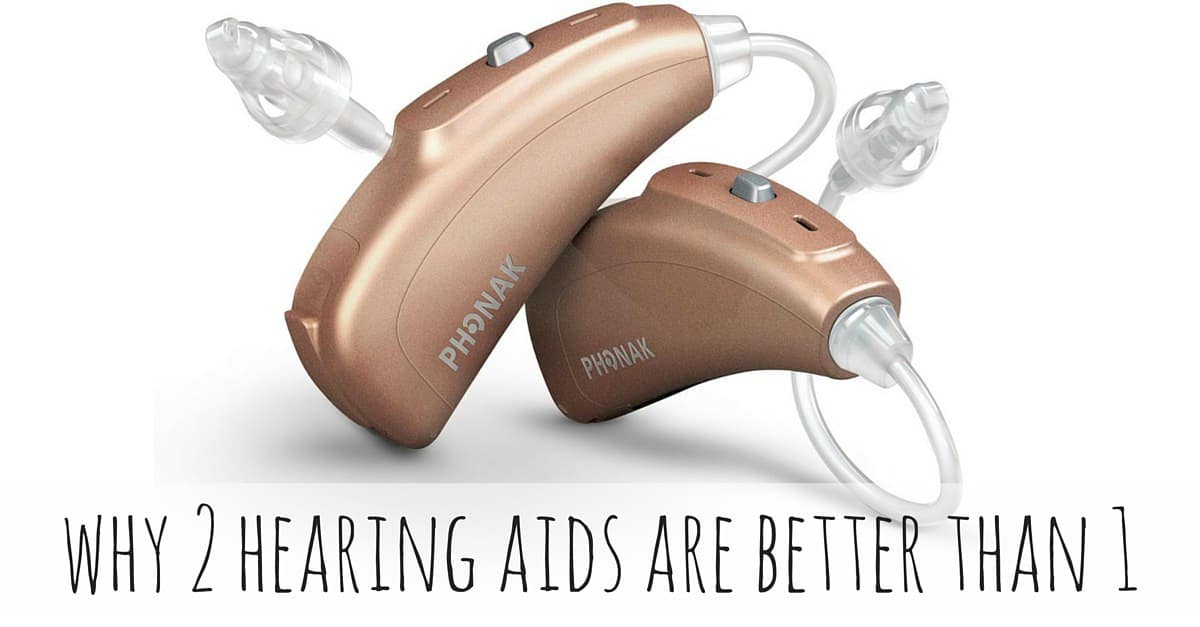
How an Audiologist or Hearing Aid Dispenser Recommends the Perfect Fit for a Hearing Aid
There are several factors that need to be taken into account when decided which hearing aid is suitable for you, your hearing loss, and your lifestyle. Each person is different and there are several different options from hearing aid styles to manufactures to match each individual. Your audiologist or hearing aid specialist will help you determine the best device for you and provide recommendations based off of the findings of the four steps below.
1. Measure Hearing
Your audiologists will test your range of hearing. This is called an audiogram. It is displayed as a diagram of your hearing. It is common to hear some sounds better than others. This data is used in the prescription to correct you hearing. From this, you’ll be able to determine whether you need one or two hearing aids. Audiologists will often recommend two hearing aids to ensure that one ear does not get progressively worse overtime. Wearing two hearing aids makes it easier to locate sound, understand crisp, clear speech and have a high quality of hearing.
2. Selecting Style
Some people will prefer to have hearing aids that are barely noticeable, while others may prefer the larger models that are easier to handle and clean. For example, the completely in the ear canal model is the least noticeable to others, but because of the extremely small size, it uses smaller batteries and therefore lasts a shorter time period. Also, these devices typically don’t have extra features such as volume control and directional microphones.
On the other hand, behind-the-ear models are the largest and most visible to others, although technological advancements are making it easier to streamline these products. This type of hearing aid is appropriate to users of all ages, and it typically is capable of louder amplification than other models.
3. Features to Consider
Some people will want to have more state-of-the-art features that include Bluetooth capabilities, directional microphones and noise management. Make sure to discuss these features with your hearing care professional and find out which ones are best for your situation. If you find that you are often on the phone with friends and family members, consider a T-Coil, which allows you to switch from the normal microphone to the telephone setting.
4. Fitting for Comfort
What’s the use of wearing a hearing aid if it doesn’t fit you properly? Hearing care professionals will fit you for your hearing aids so that you can hear the best sound possible. Hearing aids should fit securely and comfortable within the ear, and you should expect to have at least one follow-up adjustment to make sure the device is correct. Since the audiologist’s office isn’t a good representation of natural sounds, you may find that your hearing changes once you walk out the door. When you are going to get your device adjusted, make sure to be as detailed as possible with the quality of sound that you can and want to hear.

Are Two (Hearing Aids) Better Than One?
There are about a dozen reasons why binaural (two eared) listening is superior to monaural (one eared) listening. Here are four of the main reasons why you should always fit both ears with hearing aids if you have hearing loss in both ears:
1. Safety
It takes balanced hearing to know where a sound is coming from. If you hear a truck coming and have to look around to see where it is coming from… well reaction time can be critical. We determine where a sound is coming from on the basis of
- The relative time in which the sound arrives at each ear
- The relative difference in loudness at the two ears
- The relative difference in the pitch of the sound at the two ears. When there is a large difference in hearing between two ears (as might occur when a person with similar hearing in both ears only wears one hearing aid) the brain cannot make use of these subtle relative differences and their ability to locate sounds may suffer.
2. Better Hearing in Noise (from phase angle cues)
An individual’s hearing in noise can be improved if the signal reaching each ear arrives at a slightly different moment in time. This is technically referred to as phase. When the brain receives slightly different, yet still audible signals at the two ears, it has the ability to cross-correlate and process the primary signal (usually speech) better than if the signal is received monaurally.
3. Better Hearing in Noise (from Intensity cues)
Sound loses intensity (loudness) when it travels from one side of the head to the other. This occurs mostly for the high frequencies which are the most important for understanding of consonants, such as /s/, /t/, /f/, and /sh/. If you have a hearing aid on only one ear, say the left one, and the person you wish to hear is speaking to you from the right side, the consonants may be decreased by nearly 20 decibels by the time it gets to your aided ear. Unfortunately, noise in the room may occur from any or all directions, so while the noise level is not decreased, the speech level is. Wearing two hearing aids ensures that the speech sounds will not be diminished any more than necessary because of your position in the room.
4. Possible Deterioration of the Unaided Ear
We hear in our brain, not in our ears. The ultimate goal of hearing aids is not just to send sound into the ear. It is also essential to retrain the central auditory system in the brain. While it is uncertain whether hearing sensitivity (ability to hear soft sounds) will decrease if your ear is not stimulated adequately, research now suggests that there can be changes in the way in which your brain processes sound when it is “starved” for speech data. Thus, providing stimulation may be important in preserving your auditory potential.
What Makes a Good Quality Hearing Aid?
Patients commonly ask, why do some hearing aids cost a thousand dollars and others costs three thousand dollars? Well, when you look at the outside of them, you surely can’t tell the difference but there are a lot of differences in the technology inside the device.
In our modern day digital technology, we can do a lot of speech processing that can be very helpful in noisier situations. Hearing aids these days are literally are able to tell the difference between a speech pattern and a non-speech pattern automatically. They are able to identify and reduce non-speech sounds and enhance the speech pattern which makes listening much easier on the wearer.
Excellent Signal to Noise Ratio. If someone gets closer to you, their voices are going to be louder. Hearing aids today can respond differently in different environments. In a quiet environment, the hearing aid can pick up sounds all the way around you equally, but as soon as we step into a floor of noise they will kick into a directional mode so they pick up more the direction they’re facing and not as much sound from behind you or beside you. That can be a real benefit in a restaurant, an auditorium or situations where you don’t have much control over things.
Wireless Communication. Today, hearing aids literally communicate with each other from the right and the left. When a sound is coming from the right the better of those instruments can not only let us know where the sounds are coming from, but perceive or give a preferential treatment to the sounds of speech coming from a certain angle and the other ear will be responding appropriately. However, when we want to make adjustments on our own, we can just push the button on one and both instruments will respond if we turn up the volume or changed to a different program.
